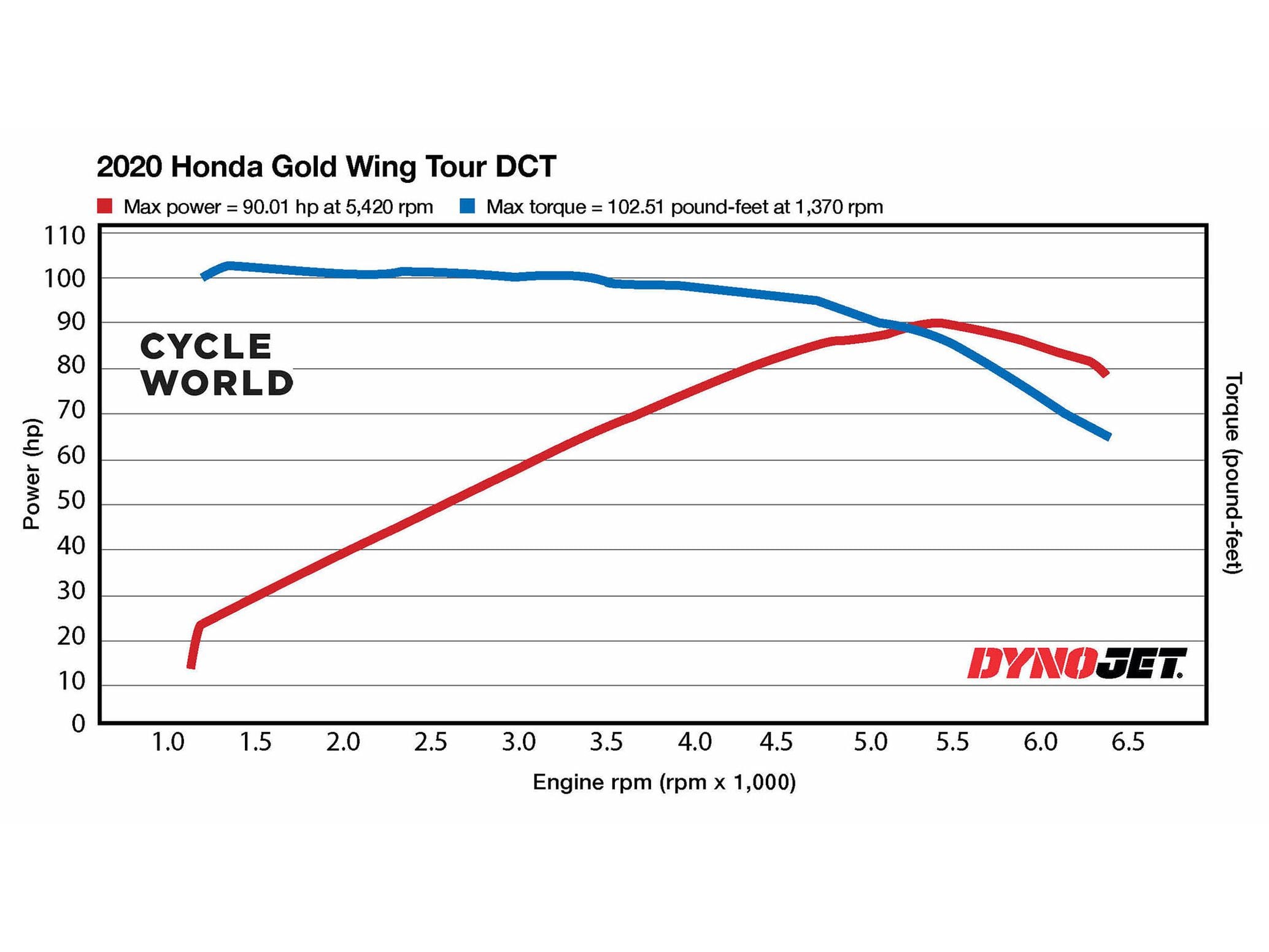Gold Wing Dyno run
There is a lot to be impressed about with the Honda Gold Wing Tour Automatic DCT, but the horizontally opposed 1,833cc six-cylinder engine is perhaps the one element that shines brightest.
Rolled onto the Cycle World Dynojet 250i dyno, the Gold Wing’s 73.0 x 73.0mm bore-and-stroke engine with Unicam SOHC cylinder heads made a remarkable 102.51 pound-feet of torque at 1,370 rpm, with a stout 90.01 hp at 5,420 revs. Torque stays above 100 pound-feet from essentially idle rpm until just under 3,500 revs, and never drops below 65 pound-feet. It’s really stout, and out of the road what this means is that no matter the load or engine rpm, acceleration is strong and linear.
To put another way: At idle rpm, the latest-generation Gold Wing makes more torque than most production motorcycles on the market do at any rpm.
It is also interesting to note that our seven-speed Dual Clutch Transmission automatic, even in manual, push-button-shift mode, would still select a lower gear if we dropped rpm too much before starting the run, so there may be more torque available below 1,300 rpm, as we found on our dyno test of a 2018 Honda Gold Wing with manual-clutch six-speed, which produced 108.41 pound-feet at 1,210 rpm.

The DCT produces 7.8 less peak horsepower and 5.9 fewer pound-feet of torque than the manual-clutch six-speed because DCT is controlled by oil pressure from the oil pump, and a friction loss is generated from driving the pump for this purpose. Based on the excellent performance of this multimode automatic transmission with selectable push-button-shift operation, it is a good use of some engine power.
The ample output and exceptional smoothness of the flat-six engine makes for one of the most effortless and finest touring engines ever produced.
